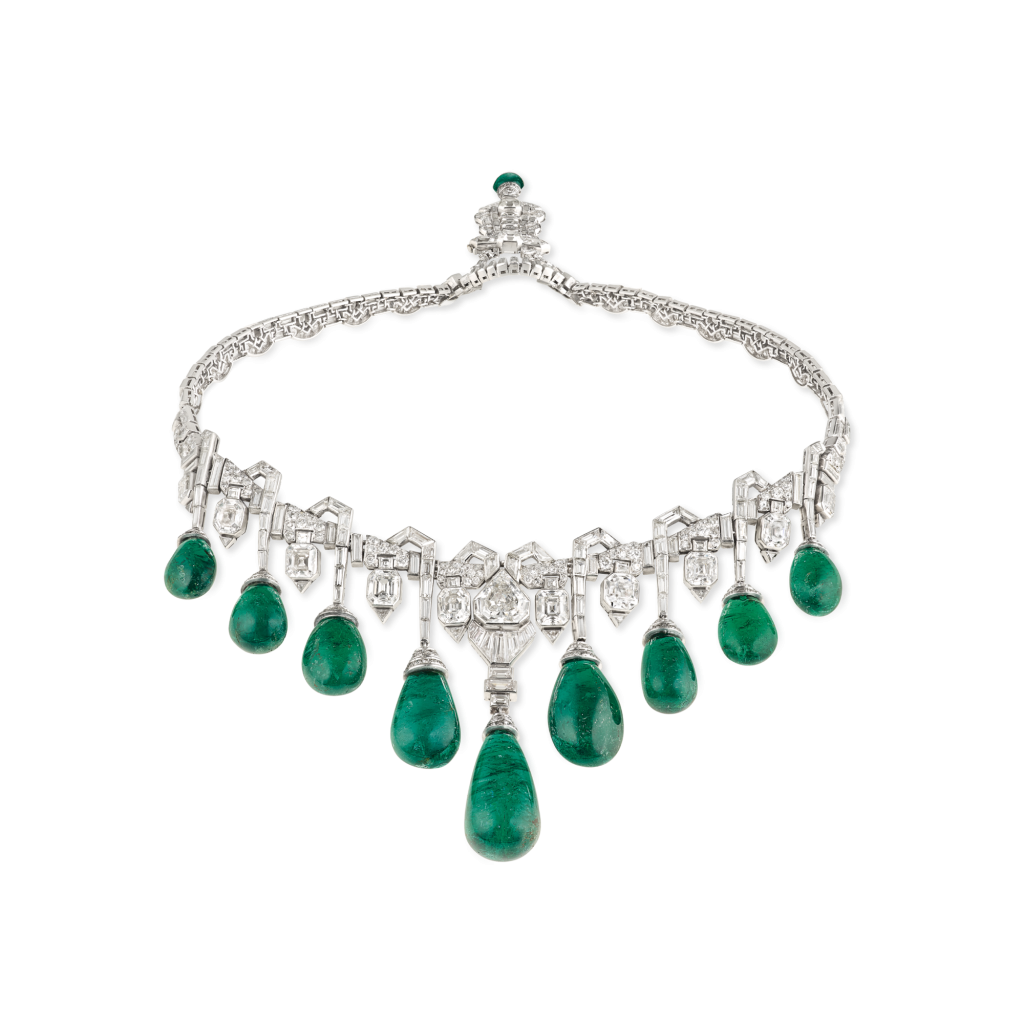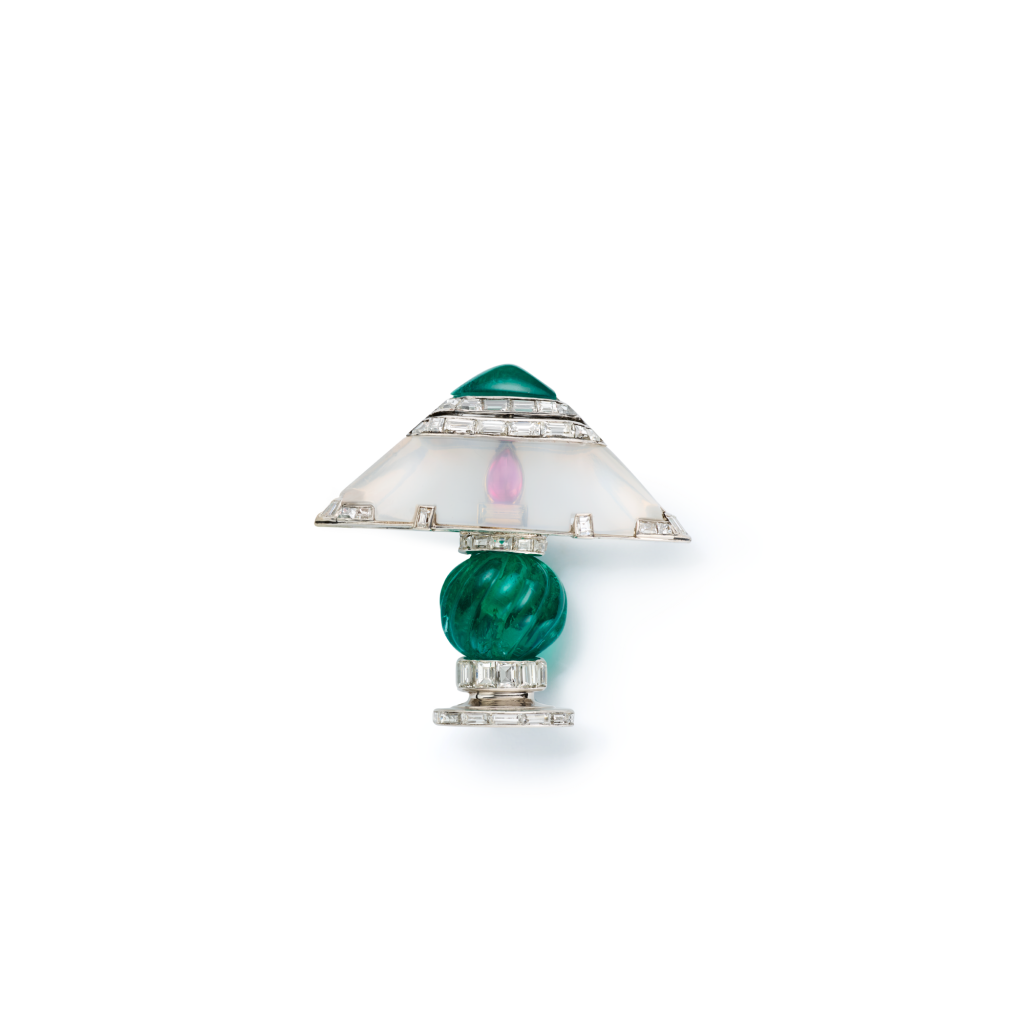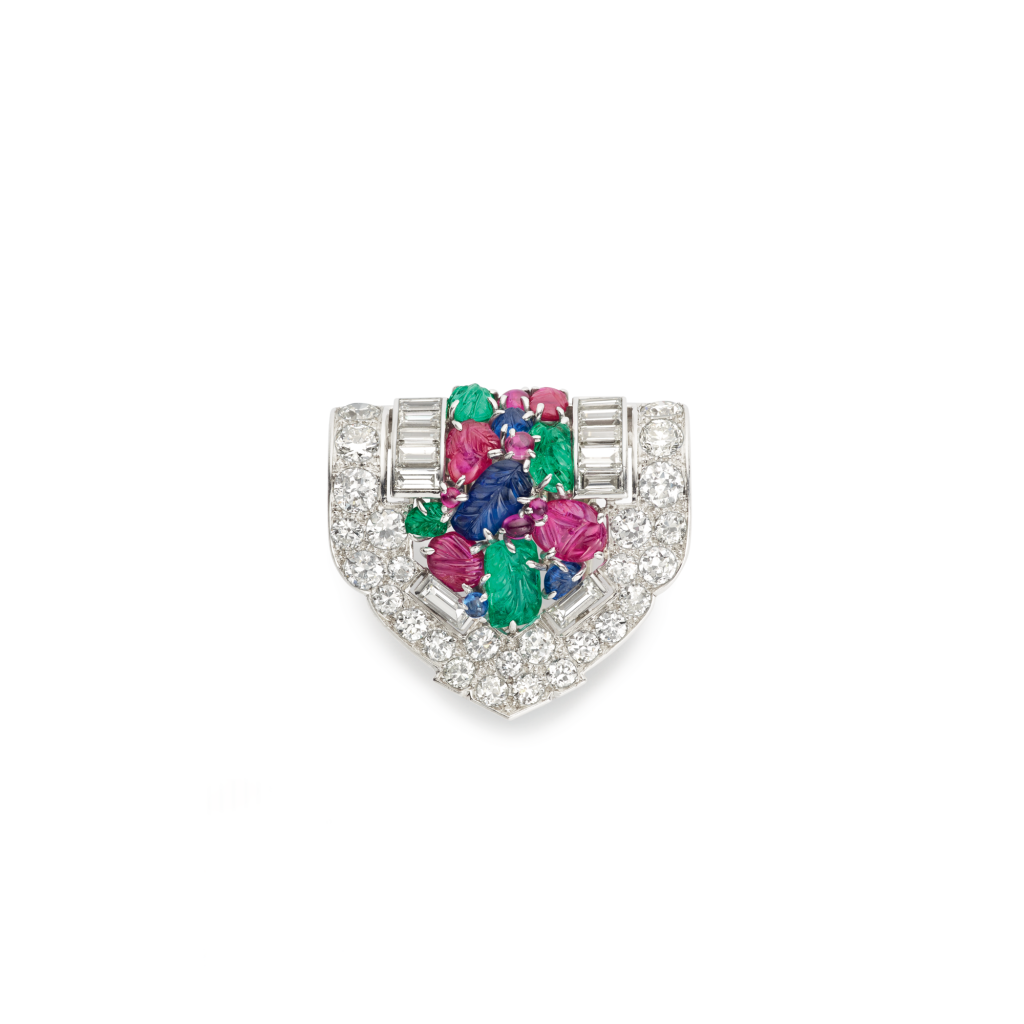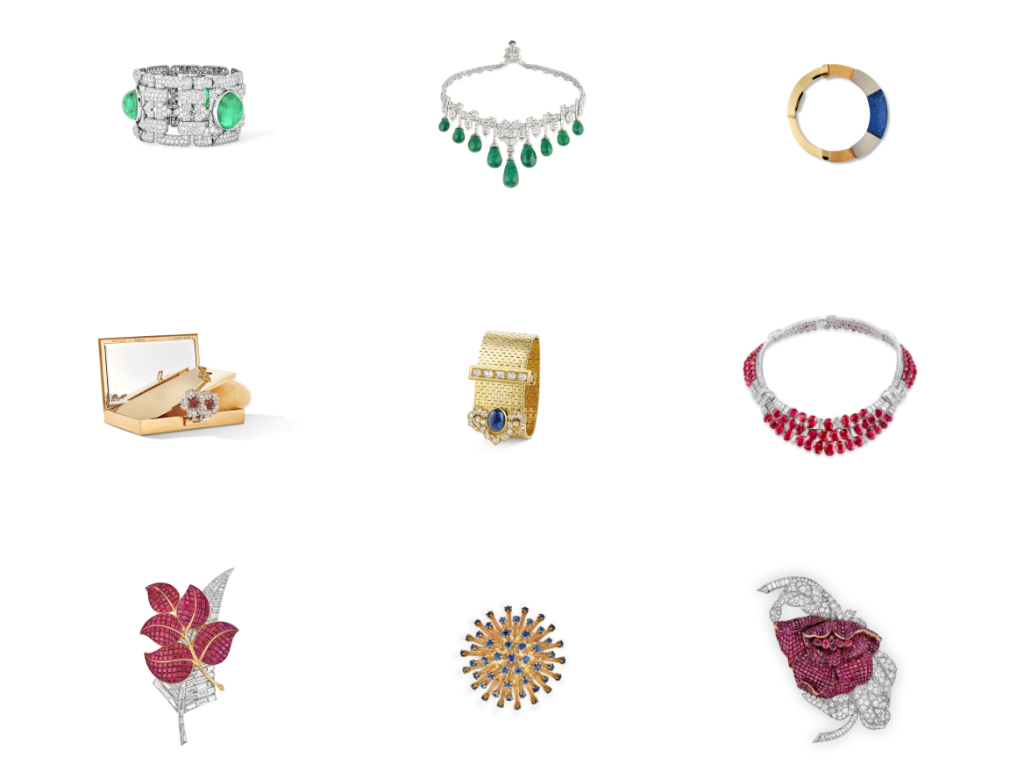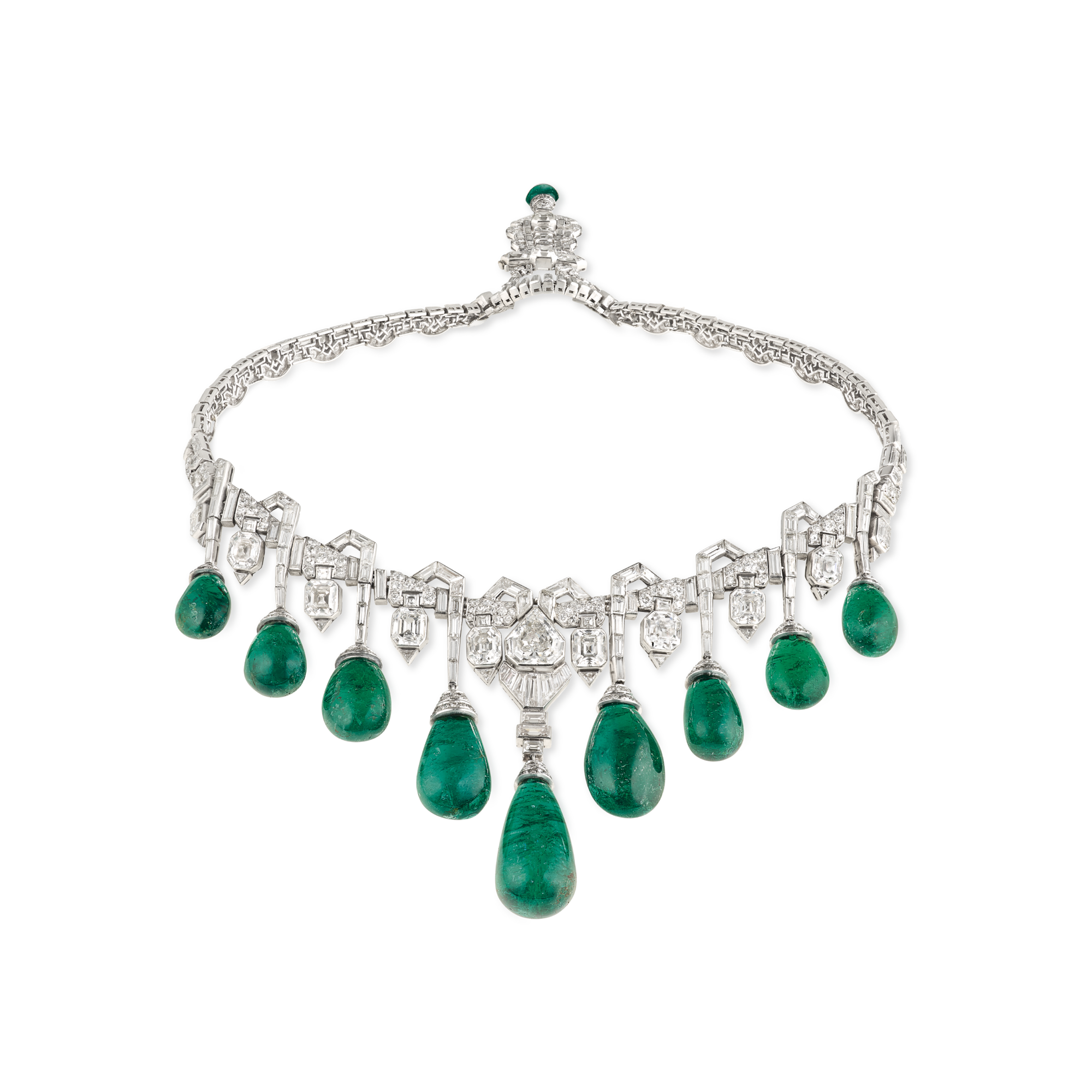
Collerette

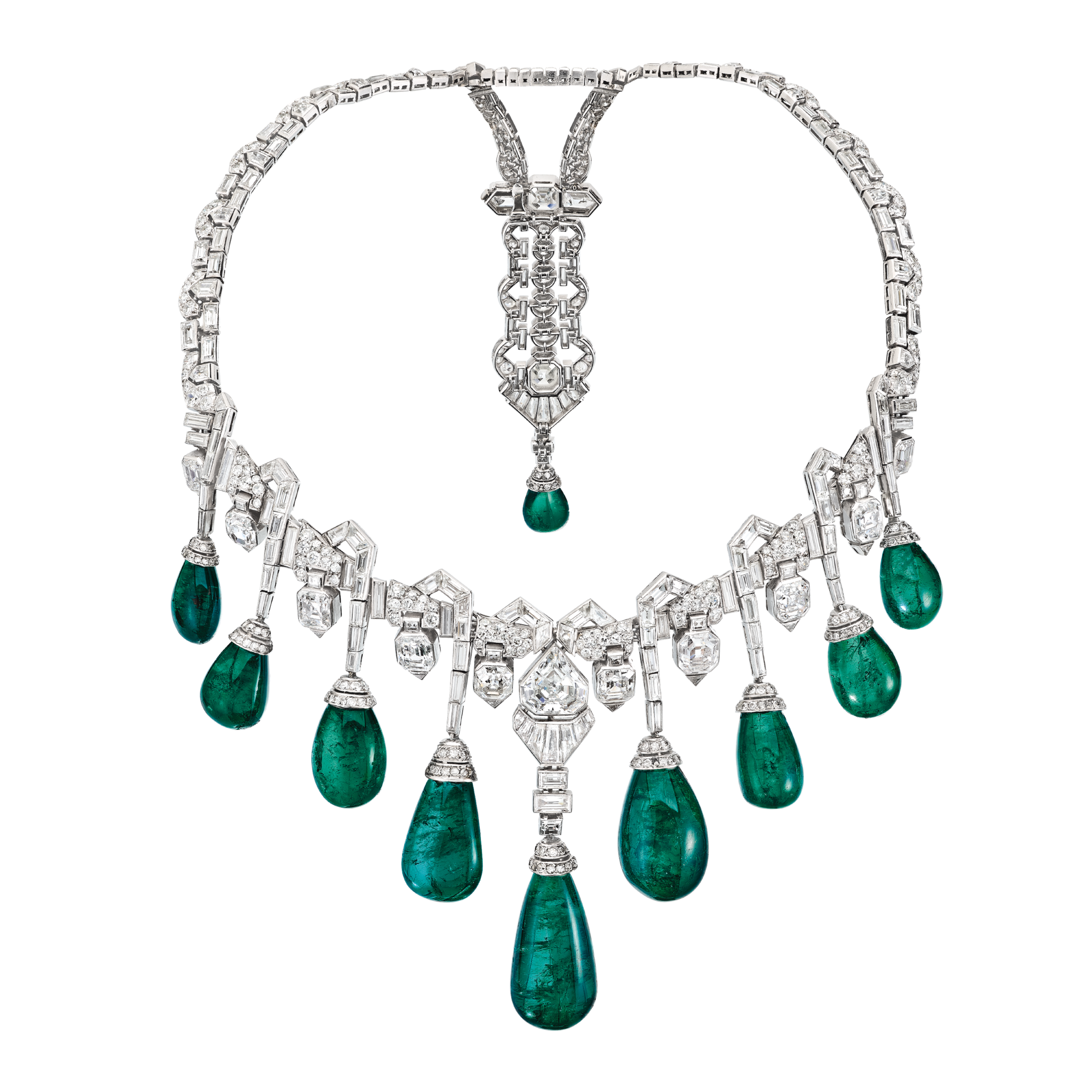
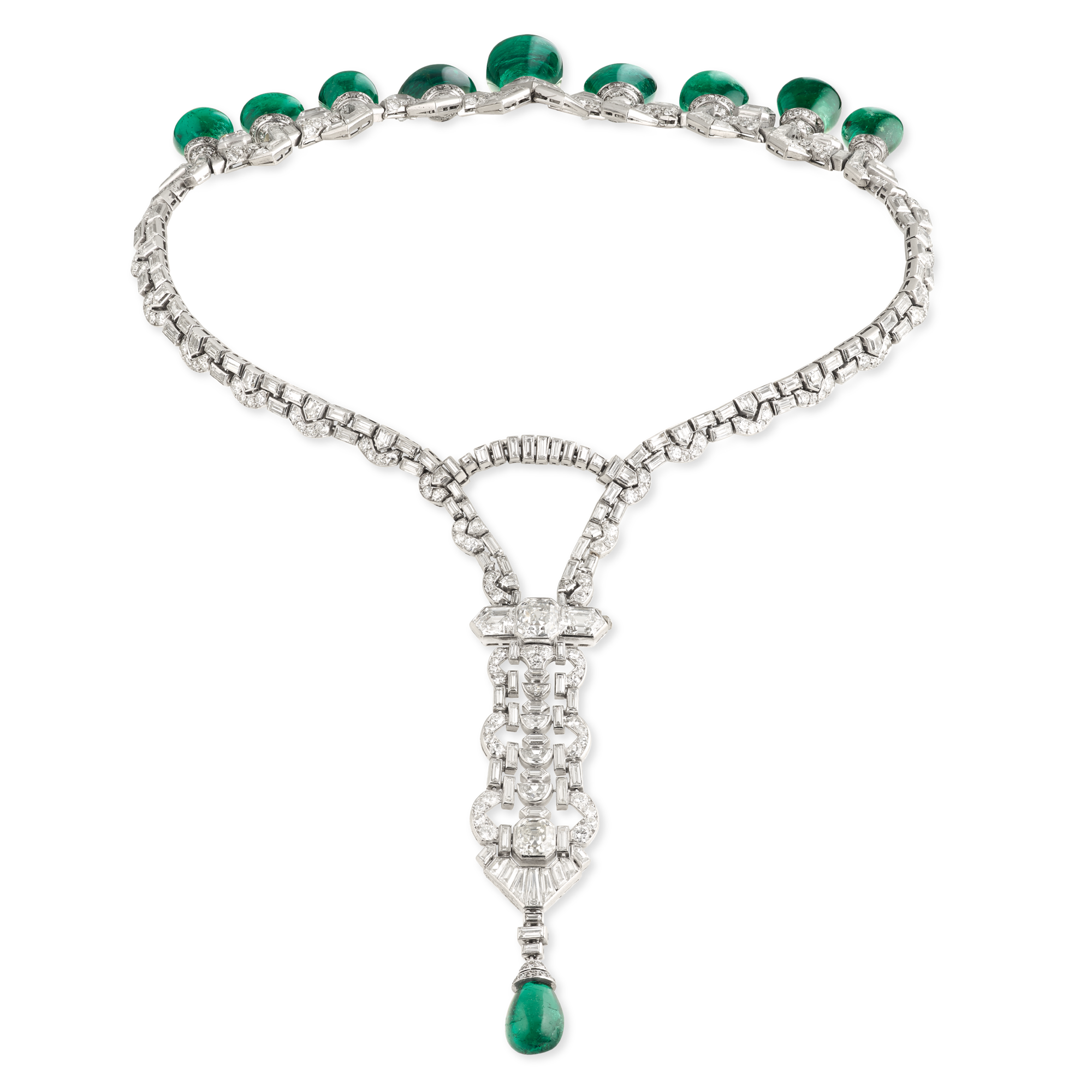
Creation details
- Creation year 1929
- Stone Diamond
- Stone Emerald
- Material Platinum
- Usage Necklace
- Dimensions 295 mm
Like other creations from 1929, the collerette necklace illustrates the esthetic transition from the first Art Deco style that appeared at the time of the 1925 Exposition internationale des arts décoratifs et industriels modernes and the second one, which prevailed in the 1930s.
This necklace is composed of geometric motifs of alternating pave-set, brilliant-cut, and baguette-cut diamonds mounted on platinum. Each motif ends with either an emerald-cut diamond or a drop-cut emerald cabochon. The necklace extends at the back with a cas- cade of diamonds combining geometric motifs with different shaped stones, and ending in an emerald drop. Known as “gardens,” the inclu- sions enliven the deep green of the emeralds and counterpoint the perfect symmetry of this piece.
The jewelry created in 1929
The jewelry created in 1929 stands out for its use of links of alternating circular and quadrangular geometric forms, pave-set brilliants and calibrated gemstones, and diamonds and colored stones. Van Cleef & Arpels creations of the period favor original jewelry forms with necklaces known as ties, and cascading collerettes.
Fawsia of Egypt’s jewels
This collerette necklace underwent several stylistic variations. In 1937, it was chosen by Princess Fawzia of Egypt after having been shortened with the removal of two emeralds. That same year, the Egyptian royal court also acquired the Peony clip, presented at the Exposition universelle in Paris.
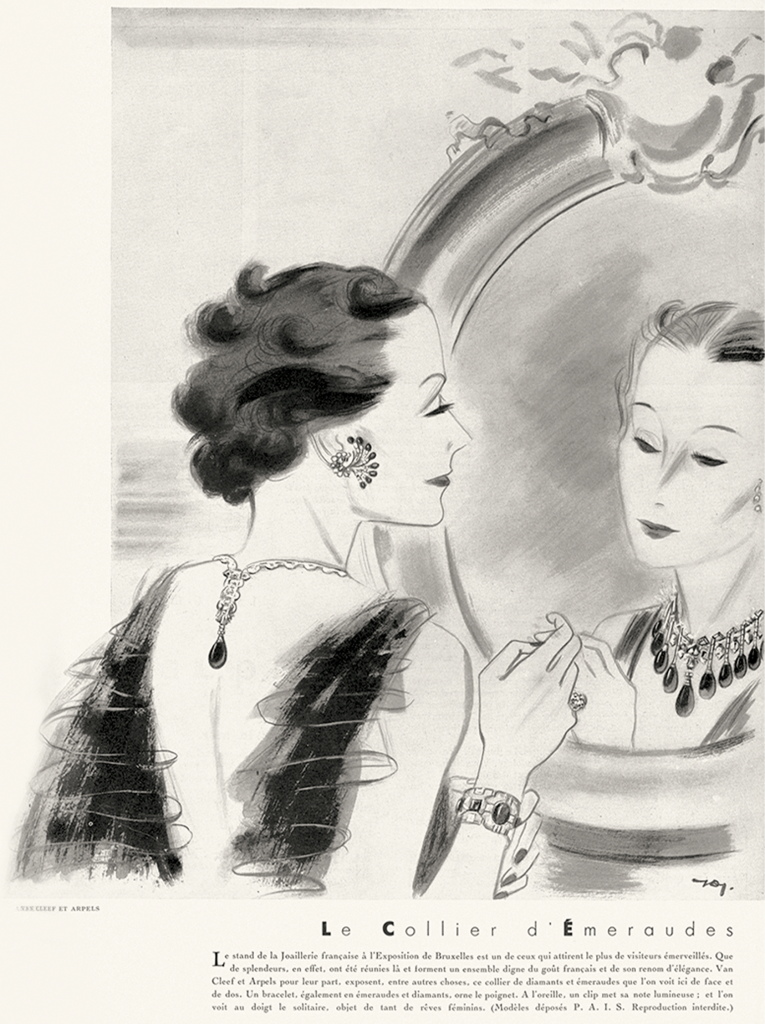
To go deeper
